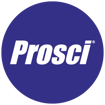Driving Improved, Sustainable Change Results
By 2050, the state of Colorado expects a 92% increase in population. The Department of Transportation is required to meet the demands of this rapid growth without a significant budget increase.

CDOT therefore began a major strategic shift, deploying lean process management principles in order to leverage the state’s resources and provide maximum value for its residents. Despite decisions to make these improvements, the organization faced some inevitable internal resistance. CDOT realized that in order to be successful, they would first need to engage employees at the individual level, helping them to create the desire for change. They appointed a new director of process and CDOT committed to addressing not only the technical side of lean improvements, but also the people side of change.
Building change capability with Prosci
CDOT leveraged the Prosci Methodology and tools to help build internal change management competencies throughout the organization. CDOT leaders gained a deep understanding of each person’s role in change, how to build role-based competency, and how to position the organization for change success. Leveraging their own facilitators, CDOT scaled their change management efforts with ease and speed, training internally.

During initial consultations, they identified customer service and organizational efficiency as key areas for improved performance, and put large enterprise changes in place. Due to the dispersed nature of the organization and unique needs, CDOT also purchased a Prosci ECM License. This allowed CDOT to positively impact more targeted groups affected by change, while meeting their need for increased flexibility and reduced training costs.
In combination with lean principles, CDOT adopted the Prosci ADKAR Model, an effective tool for managing change at both the individual and organizational level. CDOT focused their attention on specific challenges and opportunities for improvement, infusing all levels of the organization with awareness and the desire to change. Working alongside Prosci trainers, CDOT next resolved to learn the new processes and tools that would take their projects through this change to the next level.
Developing individual change competencies
CDOT began by developing select change management practitioners. They then extended role-based training to business process improvement leaders specializing in the lean methodology. Identified as key stakeholders for sustainable change, they also selected managers to receive practical training on how to support their employees and guide them through the change management process.
CDOT provided ongoing coaching at every level, but most important, they briefed executives and senior leaders on their vital roles as sponsors of change. According to Prosci research, having active and visible executive sponsorship throughout the transition is the number one success factor in effective change management.
The team also provided additional support for the front-line managers and employees most impacted by change, without a significant dip in productivity. In addition, they established a common language for change, distributed throughout the entire organization by the Change Agent Network.
Launching a Change Agent Network
CDOT established a reliable Change Agent Network with active change agents in every part of the organization, which was another fundamental element in building capability. In each of the department’s five regions, they assigned eight to 14 change agents. All members attended the three-day Change Management Practitioner Program and gained access to supporting online tools. They also participated in regular meetings via Google Hangout to address any issues and improve delivery.

Local change agents worked with executives to oversee and communicate changes regionally. They also coached their respective regional managers, assisting in guiding the employees most impacted by improvement efforts. With most centralized functions based at headquarters, they established an additional team of change agents at this location to provide a robust internal network.
Results
CDOT’s large number of interdependent initiatives required organization-wide cooperation and change capability. With the application of change management and continuous reinforcement, CDOT continued to build momentum and to this day produces improved, sustainable results.
By integrating change management into their lean improvements, CDOT was able to deliver increased change effectiveness and accelerated implementation using the ADKAR Model, with results that included:
- Reducing error rates of the oversize and overweight permit division by up to 55%
- Driving operational efficiencies, such as eliminating 23 unnecessary steps in one office’s contract review process, reducing contract review time from five to three days
- Equipping executive team and people managers to be key influencers for changes critical to CDOT’s mission

Founded in 1994, Prosci is a global leader in change management. We enable organizations around the world to achieve change outcomes and grow change capability through change management solutions based on holistic, research-based, easy-to-use tools, methodologies and services.




/Case%20Study%20Graphic-01.webp?width=175&name=Case%20Study%20Graphic-01.webp)


/Case%20Study%20Graphic-150x73.webp?width=175&name=Case%20Study%20Graphic-150x73.webp)